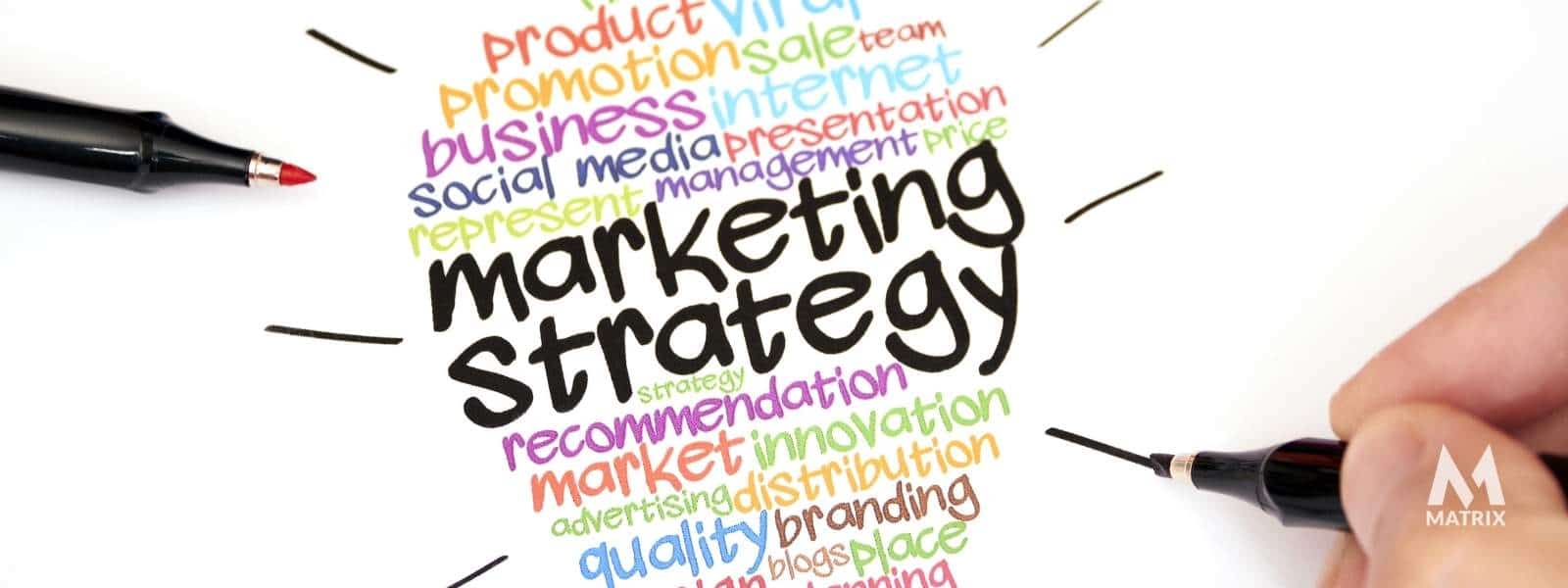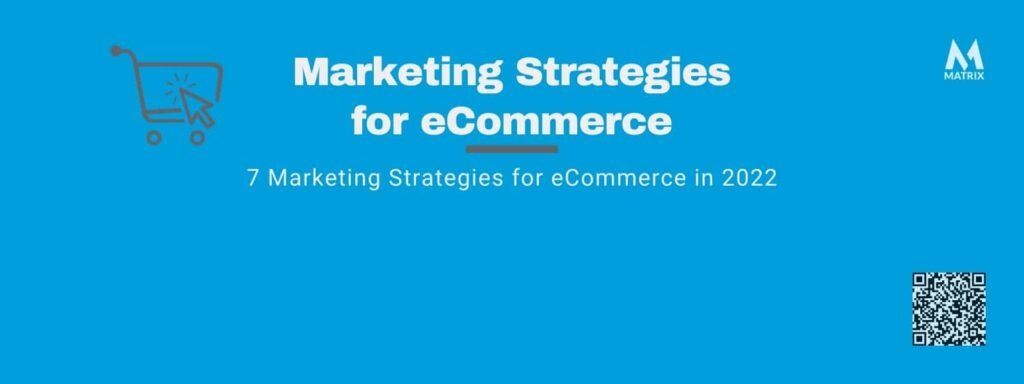7 B2B Marketing Strategies for eCommerce in 2025
B2B Marketing Strategies for eCommerce for Makreting Managers.
Winning strategies for B2B e-commerce businesses are critical to growing sales in 2024. In 2025, everything will change with AI.
The e-commerce marketing strategies included in this post will increase lead quality and reduce customer acquisition costs.
B2B marketing strategies are the techniques businesses use to reach and persuade other businesses to buy their products or services. These strategies can vary depending on the industry, the target audience, and the budget. However, some of the most common B2B marketing strategies include:
- Content marketing involves creating and distributing valuable content that attracts and engages potential customers. This content includes blog posts, articles, ebooks, infographics, and videos.
- Email marketing: This involves collecting email addresses from potential customers and sending them regular emails with updates about your products or services, as well as special offers and discounts.
- Social media marketing involves using social media platforms like LinkedIn, Twitter, and Facebook to connect with potential customers and promote your brand.
- Search engine optimization (SEO) involves optimizing your website to appear higher in search engine results pages (SERPs). This can help you attract more visitors and convert them into leads or customers.
- Pay-per-click (PPC) advertising involves paying a fee each time someone clicks on your ad. This can be a good way to reach a targeted audience quickly.
- Attending industry events: This is a great way to meet potential customers and partners and learn about the latest trends in your industry.
- Referral marketing involves asking existing customers to refer your products or services to their colleagues or friends.
- Public relations: This involves generating positive media coverage for your brand. This can help you build credibility and trust with potential customers.
Your business’s best B2B marketing strategy will depend on several factors, including your budget, target audience, and goals. However, combining these strategies allows you to reach a wider audience, generate leads, and grow your business.
Content generation has become a significant challenge.
Content generation has become a significant challenge for businesses, with the demands of constant updates, fresh ideas, and maintaining quality across multiple platforms. Many marketers, like Jenn, find themselves overwhelmed, struggling to keep up with their content calendars while ensuring each piece resonates with the audience.
Enter Matrix’s AIContentPad, a game-changing solution that simplifies the entire process. AIContentPad delivers high-quality content faster than traditional methods, and its adaptability makes it perfect for a wide range of needs—from blog posts to whitepapers, emails, and social media content.
By leveraging the power of AI, AIContentPad not only saves time but significantly cuts costs compared to outsourcing or hiring additional staff. Marketers like Emily, who have already adopted AIContentPad, produce top-tier content without burnout.
It offers a seamless, efficient way to manage content creation while ensuring you stay ahead of the competition. In an era where time is money, Matrix’s AIContentPad is proving to be the future of content generation, offering a smarter, cheaper, and faster solution for businesses everywhere.

Here are some additional tips for B2B marketing:
- Focus on your target audience: Ensure you understand who you are trying to reach with your marketing efforts. What are their needs and pain points? What are their buying habits?
- Be clear about your value proposition: What makes your product or service unique? Why should someone choose you over the competition?
- Use data to track your results: It’s important to track the results of your marketing efforts to see what’s working and what’s not. This will help you optimize your campaigns and get better results over time.
- Be patient: B2B marketing takes time. Don’t expect to see results overnight. Just keep at it, and you will eventually see success.
B2B marketing strategies take A/B testing and experimentation to nail them.
The best strategies for ecommerce companies exist in the digital marketing space. This is where all the opportunities exist, and tracking is seamless.
Ten years ago, concepts like voice searches, data-driven marketing, natural language processing, and artificial intelligence were bordered by science fiction. Today, these sophisticated technologies have become mainstream and impact the marketing landscape. We will cover the most effective B2B marketing strategies, traditional B2B marketing strategies, and B2B content marketing strategies with AI.
To gain a competitive advantage, keep customers, and boost sales, B2B online retailers must keep pace with marketing innovations and implement them as quickly as possible.
The B2B ecommerce platforms, like WooCommerce and Shopify, have made it easy to create a website with e-commerce capabilities. DIY B2B ecommerce solutions like Squarespace and WIX are simple to create.
However, after about six to nine months, these do-it-yourselfers often wonder why they are not getting any traffic to their website or converting any sales. This is where digital marketing agencies come into play for the right copy, testing, and conversion strategies.
Learn how these seven key tactics and marketing strategies for e-commerce any B2B ecommerce business must use in 2024.
1. Invest in Artificial Intelligence

Artificial intelligence is transforming digital marketing. Implementing AI in the B2B ecommerce ecosystem has many benefits, including lead identification, hyper-targeting, content personalization, sophisticated data analysis, better customer insights, forecasts, etc.
Many B2B-specific apps may help you here. AIProdPad, AIBrandPad, and AIContentPad are all integrated mini-apps Rolling up to composite AI or super-apps.
For example, 6sense uses AI to analyze large chunks of data for more accurate predictive analytics, precise lead scoring, campaign optimization, etc.
Many conversation intelligence platforms leverage artificial intelligence to monitor sales calls and generate insights on improving conversions.
Artificial intelligence can analyze customer behaviors and browsing patterns and use their data to help you understand how they learn about your brand and products. This is where chatbots play an essential role.
B2B marketing strategies for e-commerce that include artificial intelligence and machine learning are showing promise. B2B marketing strategies take A/B testing and experimentation to make it so easy!
2. Make your Content Diverse with Interactive Marketing

Content marketing kept dominating the digital marketing landscape in 2022. However, its formats will change. To engage tech-savvy online shoppers, your content marketing efforts must go far beyond generic blog articles and keyword-rich product page descriptions.
This is where interactive marketing and interactive technologies come into play.
B2B marketing strategies for e-commerce that use interactive technologies see more sales than ones that fail to.
Immersive content with B2B Ecommerce Marketing Strategies
For starters, create dynamic content that provides targeted user experiences. Statistics remind us that 91% of customers want interactive and immersive content. These could be quizzes, polls, embedded calculators, etc.
Create lead magnets
One of the significant purposes of content marketing is to help you generate more leads. That is where you should start creating lead magnets. As their name suggests, lead magnets offer high-quality content for your customers in exchange for their email addresses.
Lead magnets are great B2B marketing strategies for e-commerce to build your marketing database.
Now, many content formats can become lead magnets. For example, as an ecommerce brand, you could create online brochures to engage customers and build trust.
As brochures are critical for your B2B ecommerce brand, keep them pleasant to the eye, original, and convincing. Ensure your writing style, fonts, colors, shapes, and patterns effectively reflect your brand.
While you can use graphic design tools to create brochures, leaving it to professionals is always a better option. For example, GHN Wholesale must compress various products into a compelling catalog. That’s why they outsourced brochure design to Infostarters, which approached the brochure design and helped them increase sales and brochure downloads. Apart from brochures, you could also use:
- Ebooks
- gated infographics
- ultimate guides
- free templates
- whitepapers
- webinars
- free tools
- podcasts
Video content

Generative AI Marketing Solutions
Matrix’s competitive edge lies in our ability to deliver scalable, technology-driven marketing solutions faster and more efficiently than many traditional agencies.
Customers often find video content more engaging than textual content. Stats say that 52% of customers claim that watching a brand’s video empowered them to shop online. According to HubSpot, video is the most popular way people learn more about products or services. This is how 68% of users find brand information.
Now, there are different types of video content to implement, including:
- 360-degree videos: Remember that customers cannot touch or hold your products when purchasing them. 360-degree videos let them observe your products from various angles to determine whether they are the right choice.
- Live video: You could use it for product demos, behind-the-scenes videos featuring your staff, or showing the production process, interviews, etc.
- 1:1 video: You create personalized video messages rather than making phone calls or sending generic emails.
YouTube videos will grow your reach if you optimize them for search engines. For example, publish the transcription of your video and maximize your video for the right keywords. HubSpot also says that, in email marketing campaigns, the term “video” in a subject line can boost your open rates by 19%.
Use B2B Ecommerce Marketing Strategies for Social Media Stories
Snapchat first introduced the My Story features, followed by Instagram, Facebook, and YouTube. Given that stories disappear after 24 hours, they will increase users’ FOMO (fear of missing out) and, in this way, boost their interest in your brand. Some of the major benefits of social media stories are:
- Improved brand awareness
- Greater follower engagement
- Reaching younger customer groups
- Increasing website traffic
- Increasing sales with strong CTAs
- Collecting customer feedback via polls
- Providing more business data via location tags
3. Sell beyond your Website and Use Marketing Strategies for E-commerce to Boost Sales
Since ecommerce and social networks are growing astonishingly, B2B brands must combine them. Let’s take the example of Instagram, which has become inevitable for most online retailers.
Social media marketing is a must for B2B e-commerce marketing strategies. It increases your reach and amplifies your message.
It lets you present your products visually compellingly, build personal relationships with your audiences, and humanize your online presence. In March 2019, Instagram launched Instagram Checkout, letting customers complete their purchases from Instagram.
This is an excellent opportunity for both B2B ecommerce brands to grab customers’ attention, engage them, and inspire them to purchase immediately.
Above all, with personalized and interactive ads, brands can target the right audiences and shorten their sales funnel. This way, they will minimize the risk of customers ditching the purchase because they need to switch apps or complete complex registration forms.
4. Personalize Customer Experiences
Personalization is the backbone of any successful digital strategy. Research studies found that 63% of consumers are frustrated with generic ads, while 80% are likelier to buy from companies that offer personalized experiences.
This is important to B2B ecommerce sites, with more demanding customers and longer sales cycles. Therefore, to attract customers, B2B ecommerce sites must provide them with exceptional experiences.
Now, there are many steps to implement when personalizing B2B ecommerce customer experiences, including:
- Segmenting email lists. Most of your customers are busy. They receive a bunch of emails daily. They will open the most relevant ones without having time to browse them. And, to be among them, you need to stop sending generic emails. Instead, segment your email newsletter list according to your audience’s needs, problems, and preferences and send offers, content, and relevant products.
- Create loyalty programs for your returning customers. This will prove you care about them and inspire them to buy from you.
- Personalize website functionalities. For example, you could track their browsing patterns and past purchases and, based on them, recommend relevant content and products. Make your customers’ lives easier by offering them bulk products and displaying similar products to those they searched for.
- Create targeted content. For example, you could segment your website visitors by age, location, or gender and display relevant offers on your homepage.
5. Marketing Strategies for E-commerce Use Chatbots

With the rise of conversational marketing, customers expect brand communications to be natural, interactive, helpful, and timely.
Using live chat on your website and social networks helps, but what happens when your staff clocks off? If you do not get real-time feedback, your customers may leave your site frustrated and never return.
That is where a chatbot can help. According to some recent predictions, chatbots will power 85% of customer service activities by 2023.
If done right, B2B marketing strategies for e-commerce must use chatbots to reduce customer service costs and improve the customer experience.
A chatbot can increase your online presence in multiple ways. For starters, they provide exceptional customer service 24/7. Backed by AI, they will keep “learning” stuff about your customers.
Getting answers to their questions faster, B2B customers will complete the purchase sooner, meaning your sales funnel will be significantly shorter.
Another great benefit of chatbots is personalization. Many brands use chatbots as quizzes, asking leads about their needs, preferences, and expectations and, based on them, pointing customers to the right products.
Chatbots are powerful weapons for humanizing customer interactions. They also use natural language processing to understand customers’ questions and ensure that they sound like human beings.
You can create amazing scripts to make your brand’s conversations with customers more natural. Stats back me up: 63% of customers do not know they’re not talking to a human when chatting with a bot.
Chatbots can gamify user experiences. For example, you could create an engaging story in which your customers participate and make decisions to further impact their conversation with the bot.
6. Keep Optimizing for Voice Search
With the rise of smart speakers, voice search will skyrocket in 2020 and beyond. Research predicts that over half of all searches will be voice by the end of 2020. This will impact the retail industry, too. Voice shopping will jump to an astounding $40 billion by 2022.
B2B marketing strategies for e-commerce must include voice search. Have you ever ordered something over Echo?
Because of that, you need to optimize every aspect of your digital marketing strategy for voice searches. For example, you could start optimizing your site for the right keywords. Remember that voice searcher need not look at their screens all the time.
Using voice, they communicate with search engines. Their language is organic, and keywords are more conversational. For example, they will focus more on long-tail keywords, use action verbs (e.g., go to, find), and ask questions. That is why you will need to go beyond traditional keyword research tools. Use Google’s People Also Ask, Google Trends, Q&A sites, or Answer The Public as inspiration for intent-based keyword research that will get you higher in voice searches.
Besides redefining your SEO efforts, voice search also requires businesses to provide seamless user experiences. Many brands are already using voice technologies to deliver relevant content. For example, PayPal lets users use Siri to send money to friends and family. Jetson is killing it, too, allowing customers to use voice devices to make purchases.
7. Take Advantage of Augmented Reality
According to Gartner, 70% of businesses will use AR technologies by 2022. The main difference between virtual and augmented reality is that the latter is more realistic and implementable in digital marketing.
Brands have already seen AR’s fantastic potential. For example, Sephora’s Virtual Artist lets users see how different types of makeup will look on their faces when purchasing online.
Ikea has designed the Ikea Place app, where customers (individual consumers and businesses) can take a photo of their room and insert different pieces into it. They can even observe the furniture from various angles and move it around.
Yes, you can use AIContentPad to write articles. AIContentPad offers a free AI content writer who can generate ideas, outlines, or paragraphs for a specific topic. It can also be used to generate social posts. The length of time it takes for the AI to write an article will depend on the length and complexity of the article. However, it can typically generate a short article in a few minutes. Learn about the CMO’s priorities.
In the AI Content Writer dialog box, you will need to provide the following information:
- The topic of the article
- The length of the article
- The tone of the article
- The target audience for the article
Once you have provided this information, the AI content writer will generate an outline for the article. You can then edit the outline to your liking. The AI content writer can also be used to generate social posts. To do this, you will need to navigate to the Marketing > Social > Posts section. Once in the Posts section, click the “Create Post” button and select the “AI Content Writer” option.
In the AI Content Writer dialog box, you will need to provide the following information:
- The social media platform for the post
- The target audience for the post
- The message you want to convey in the post
Once you have provided this information, the AI content writer will generate a social post. You can then edit the post to your liking.
It is important to note that the AI content writer is not perfect and may not always generate high-quality content. A human editor reviewing the content before publishing is always a good idea.
Wrap up on Marketing Strategies for B2B e-commerce Companies.
The digital marketing ecosystem is becoming more user-friendly. From content marketing to SEO, each aspect of your B2B ecommerce digital strategy needs to be customer-centric. Focus on providing frictionless user experiences across all channels in real time. Above all, personalize your content ad offers according to your B2B customers’ needs to ensure faster sales and shorten the sales cycle.
B2B marketing strategies for e-commerce will change quickly in 2024. Are you aware of them, and can you implement these B2B marketing strategies for e-commerce?
We’re listening.
Have something to say about your thoughts on marketing strategies for ecommerce B2B firms?
Please share it with us on Facebook, Twitter, or LinkedIn.
General FAQ’s
What is B2B ecommerce?

B2B eCommerce is business-to-electronic and refers to online transactions between companies. It often involves wholesale distributors selling products to retail buyers, and manufacturers may also market directly to retailers through B2B eCommerce.
What is the ecommerce marketing strategy?

7 Essential Marketing Strategies for Your eCommerce Business
1. Produce Original Quality Content.
2. Optimize your website layout.
3. Content Marketing.
4. Social Media Marketing.
5. Email Marketing.
6. Search Engine Optimization.
7. Pay-Per-Click Marketing.
What are ecommerce strategies?

What are the elements of a great e-commerce strategy?
1. Know your market and ideal customer profile.
2. Suppliers and supply chain management.
3. Warehouse operations.
4. Cost of acquisition & customer retention.
5. Effective and consistent branding.
6. Shipping costs.
7. Fulfillment.
What is the B2B ecommerce platform?

B2B ecommerce, or business-to-business electronic commerce, describes online order transactions between businesses. Because orders are processed digitally, buying efficiency is improved for wholesalers, manufacturers, distributors, and B2B sellers.
What is B2B e-commerce with an example?

For example, a computer manufacturer makes B2B transactions, such as buying computer chips, glass for screens, and wire harnesses for its computers. The final purchase, a finished computer sold to the consumer, is a single B2C transaction.

